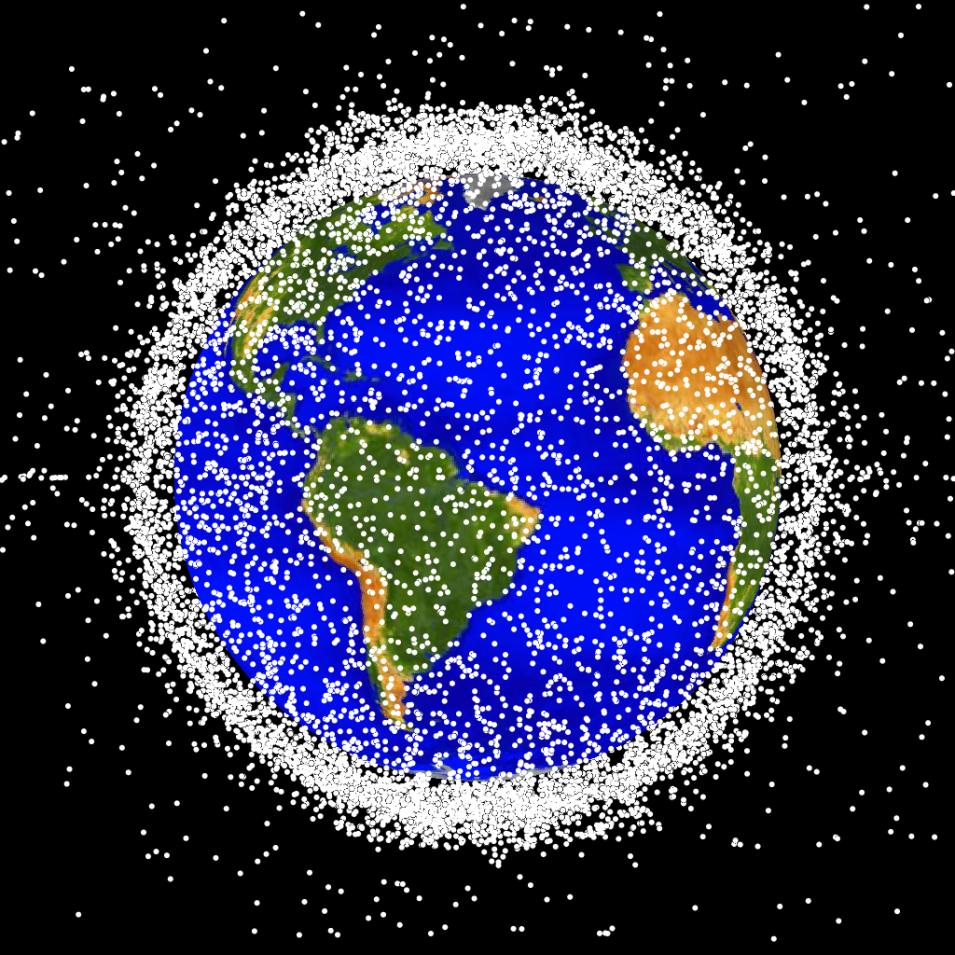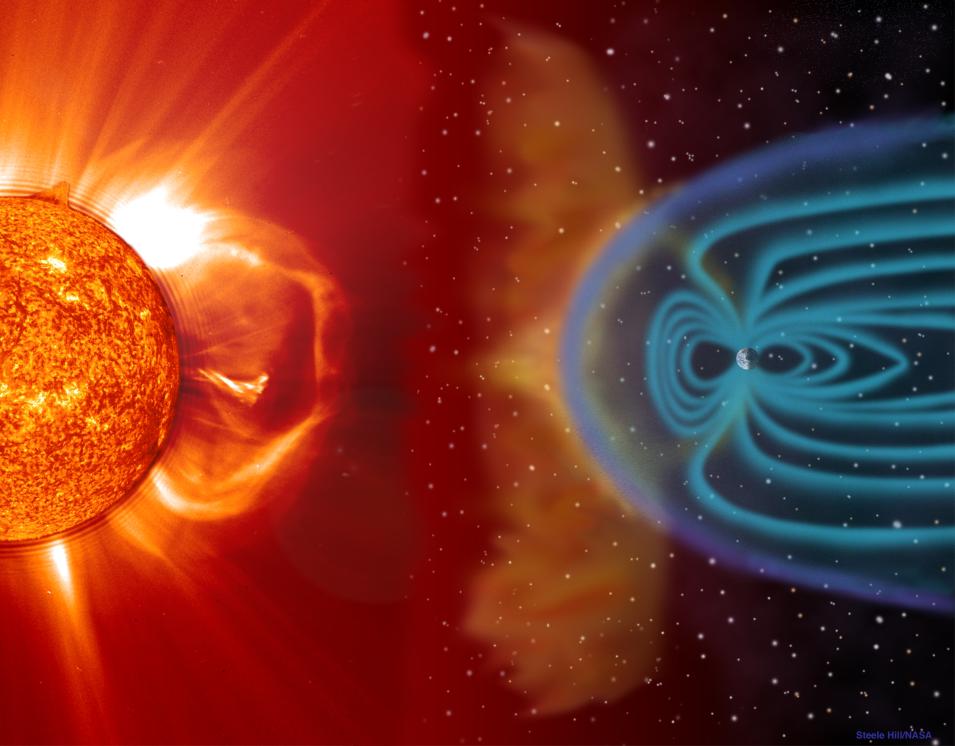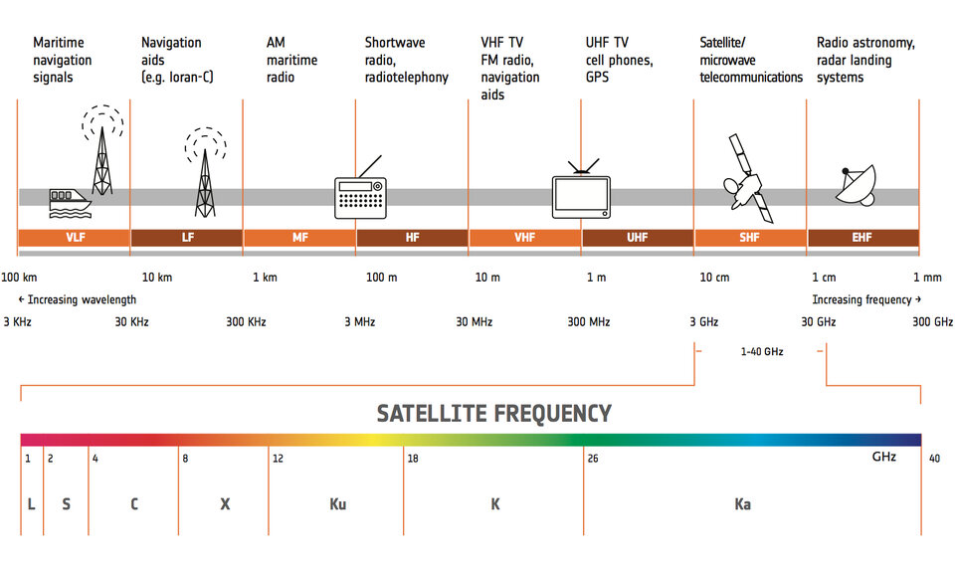When a CME hits Earth's atmosphere, it causes the atmosphere to warm and expand. This denser atmosphere creates a thicker medium through which a satellite must travel, and this additional drag can slow a satellite's momentum enough to lower its orbit. Satellite orbits are constantly being monitored, and many spacecraft carry fuel for emergency maneuvers if they come too close to other satellites or space debris (called conjunction events).
"At Goddard there are two entities [monitoring satellite orbits]," says Dr. Yihua (Eva) Zheng, research astrophysicist with NASA's Heliophysics Science Division. "NASA's Earth Science Mission Operations Project [ESMO] monitors six low Earth orbit missions. Then there's NASA's CARA—Conjunction Assessment Risk Analysis—team that works with the U.S. Space Force."
The CARA team performs risk analysis of close approach prediction data and assists with maneuver planning to mitigate identified high-interest events. The May solar storm significantly impacted satellite orbits.
"For some of the [low Earth orbit] science missions, we saw a lowering of the [satellite's] orbit of anywhere from dozens of meters to hundreds of meters," says DeHart. "It does remind you of how powerful the Sun is that just one event can lower spacecraft orbits by, as we saw, as much as 400 to 600 meters for some of our spacecraft."
These orbit changes can, in turn, impact instrument data. When a satellite's orbit changes, finely tuned instruments aboard the spacecraft may not be able to collect required imagery.
"Most satellites are designed to operate at a specific distance from Earth, and instruments are designed and calibrated based on operating at a particular orbit," says Eric Moyer, NASA ESMO deputy project manager technical, in an email. "When missions go outside that mission orbit, the science data may become degraded or unusable (out of focus). [ESMO] corrects for this by performing more frequent and/or larger maneuvers to maintain the desired mission orbit."
But using maneuvering fuel can shorten a satellite mission. For missions that carry propellant (not all satellite missions do), using fuel to correct an orbit can result in reduced mission life since spacecraft often need to reserve a minimum amount of fuel to maintain science operations and conduct a controlled re-entry. Extra maneuvers cut into how long the spacecraft can operate.
"You can see years shaved off the estimate for how many years [of fuel] would be left if a solar cycle was more active than originally anticipated," says DeHart.
Protecting Instruments
Instruments aboard Earth observation satellites and the computers and software that control them are designed to withstand the constant bombardment of solar and cosmic radiation. However, fully protecting instruments and computers from radiation would lead to significant increases in cost and weight. Just like a home computer, a sudden burst of energy can cause issues. And, like a home computer, mission teams have similar fixes.
"When we have these highly energetic particles coming to Earth, they can end up hitting a computer chip aboard a spacecraft and cause a [computer programming] bit to flip, which can then cause either the [spacecraft] computer software or the hardware to have an anomaly where we’ll have what’s called a single-event upset," says DeHart.
A bit flip is a change in a computer's magnetic memory data caused by high energy particles interacting with the computer’s memory hardware. Computers store data in the form of bits, which are sequences of 0s and 1s. High energy particles during a solar radiation storm can alter the properties of a data bit and cause it to change, or flip, from a 0 to a 1 or from a 1 to a 0.
DeHart explains that if a single-event upset disrupts a critical system during these events, the satellite is programmed to automatically stop doing anything not necessary for basic operations and point its solar panels at the Sun to make sure its battery stays charged while the ground team figures out what went wrong. This is referred to as putting the satellite into safe mode. Safe mode is designed to protect the spacecraft bus and the instruments on board. Safe mode can be caused by a single-event upset or if a piece of hardware is approaching its operational limit, as was the case with ICESat-2 and was nearly the case for Aqua and Aura during the May 10 solar storm.
"When you enter safe mode, science [data collection] stops and you investigate what’s going on with the spacecraft," says DeHart. "And of course you don't want to rush these things; you have to do a very methodical investigation on the ground."
Sometimes getting a satellite and its computers back in operation is as simple as rebooting the system. "One way to address issues is to design components that can be power cycled numerous times, which often clears out issues encountered," says Moyer. "Also, when referring to [computer] processors, bit error check and auto correction are used to identify if a bit gets flipped and to correct [this issue]. Multi-bit errors are not as easy to correct and may require [putting the satellite or instrument in safe mode] to allow code to be reloaded."
As DeHart observes, though, "it's certainly not where you can just go to your friend down the street who happens to write software. Thankfully, we maintain that expertise."
Astrophysicist Zheng also notes that timing is everything. "The most direct damage [to a satellite] can be from the [solar] flare. The flare can arrive at a satellite in about eight minutes," she says. "The CME comes to Earth, usually, in one to two days."
While one to two days is still a short amount of time, it does enable mission teams to be aware of an impending CME and take precautions to protect a satellite and instruments. Alerts and warnings come from many sources, but the primary alerts are from NOAA's Space Weather Prediction Center (SWPC) and NASA's Community Coordinated Modeling Center (CCMC) and Moon to Mars (M2M) Space Weather Analysis Office, both of which are located at NASA Goddard.
The CCMC is a multi-agency partnership that performs research and development for next-generation space science and space weather models. The M2M was established to support NASA’s Space Radiation Analysis Group (SRAG) with human space exploration activities, and its space weather analysis activities originated with the CCMC. The CCMC, M2M, and SRAG partner together on model validation. After a space weather event, M2M, in conjunction with SRAG and CCMC, runs an evaluation of the model output to identify any forecast delays and the reasons for these delays to help improve their models.
"One to two days is the most time you’ll have for a concrete warning. We received an alert on May 9 that there may be a very strong geomagnetic storm on May 10," says DeHart. "I sent a warning to the Earth science mission directors that we may have a strong geomagnetic storm and we might have a single-event upset occur with one or more spacecraft and to keep this in mind in case we see an anomaly pop up."
Satellite Communications
Periods of strong solar activity can make it difficult to downlink data from a satellite instrument to ground stations. Satellites transmit data to Earth using different frequencies of the electromagnetic spectrum. Solar flares are often accompanied by solar radio bursts (SRBs), which have the potential to disturb satellite data transmission. Zheng points to a powerful solar storm in 2006 that compromised numerous global positioning system (GPS) receivers due to the frequency of the SRBs being similar to those used by the GPS satellites to transmit data.


